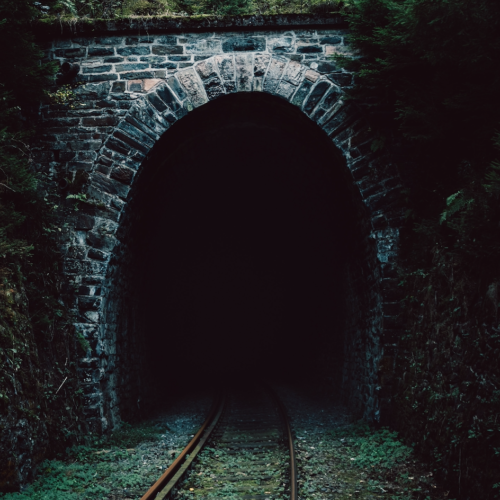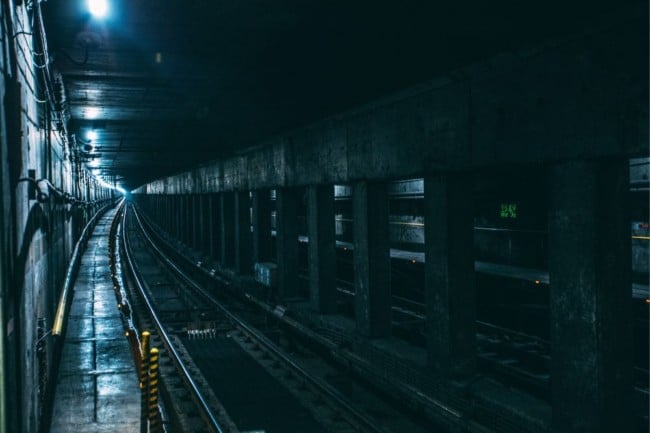Most people know that Jersey City has a rich history. Tons of events and famous players in U.S. and world history have passed through this Hudson County city for different reasons. When one thinks of the Underground Railroad, the mind immediately goes to Harriet Tubman, the south, and slaves escaping to freedom. But what many may not know is that the Underground Railroad actually has roots in Jersey City. Yes, Jersey City has some seriously deep connections to the Underground Railroad and helped many travel back and forth and find their way to freedom in the north. Read on to learn all about Jersey City’s role in the Underground Railroad.

About the Underground Railroad
The Underground Railroad operated from the late 18th century to the Civil War during the era of slavery and was a vast network of routes, people, and places that helped fugitive slaves in the American South escape to the North and Canada. The North was called “the promise land” because slavery was prohibited.
The name “Underground Railroad” was not an actual railroad, but it served a similar purpose of transporting people long distances through barns, churches, businesses, and homes to escape slavery. Tens of thousands of fugitive slaves arrived in Jersey City by crossing over the Delaware River from many states such as Maryland, Virginia, and North and South Carolina. Jersey City was one of the last “stations” on the Underground Railroad through New Jersey. The Garden State was now the gateway to freedom, even though it had once taken slaves in almost 200 years earlier.
The History in JC
The Underground Railroad in Jersey City was in the same area as the Dutch settlement of New Netherlands at Harsimus, where slavery was first introduced in the 1640s. Dutch colonists imported African slaves for labor to develop their colony of New Netherland. Settlers with recognizable street names like Garrabrant, Newkirk, Brinkerhoff, Prior, Tuers, Van Horne, Van Reypen, Van Vorst, Van Winkle, and Vreeland, among others, purchased slaves to work at their estates and farms during this time in Jersey City. One of the very first slaveholders was Jacob Stoffelsen, married to Vrouwtje Ides Van Vorst (now a familiar street name and park in Jersey City).
Read More: Exploring Jersey City: The Bergen-Lafayette Neighborhood
Stoffelsen worked for the Dutch West India Company as the “Commissary of Stores” and was an overseer of slaves in New Amsterdam. England later took control of the colony in 1664 and continued the importation of slaves from Africa. During the time of the American Revolution (a colonial revolt that occurred between 1765 and 1783), there were enslaved African Americas on each side. The British Crown promised the slaves freedom if they would leave their masters and fight for the British. Thousands of slaves escaped to the British with the promise of freedom. They re-settled more than 3,000 freed slaves during this time.
Underground Railroad Roots in Jersey City
When the time of the Underground Railroad came around, Jersey City had underground routes in which slaves traveled in darkness for 10 to 20 miles a night escaping into the free state of New Jersey. The people who helped and worked for the Underground Railroad in Jersey City had a passion for justice and a drive to end slavery. They were so passionate about helping the slaves that they risked their own lives, safety, and freedom to help others.
Reverend John Cornelison of the Dutch Reformed Church (now Old Bergen Church), conducted a ministry for Black slaves in Jersey City. He also had slaves at his home on the corner of Bergen and Sip Avenues and provided them with religious services and reading lessons. Many African-Americans joined white congregations prior to the founding of African-American churches in Jersey City during the late 1800s.
An 1841 map of Jersey City also marks an early “African burial ground” on the estate of slave owner Cornelius Garrabrant. Funerals for slaves were held at his Communipaw stone house, which stood at Phillip Street. The slaves were then buried behind his home at the intersection of Johnston Avenue and Pine Street (now in the Bergen-Lafayette neighborhood of Jersey City) and continued to be buried there through the era of the Underground Railroad. This is close to the current entrance into Liberty State Park.
By 1827, New Jersey had freed the last of its slaves under gradual abolition. During the journey of the Underground Railroad, an estimated 50,000-57,000 fugitive slaves came through to Jersey City. Once they arrived here safely, many would leave for Canada or New York. One of the last stops on the way to New York City was the Hilton-Holden House located at 79 Clifton Place, one of the last known remaining stations in Jersey City. This location is named after the abolitionist, banker, and amateur astronomer, David Holden who resided there.
See More: How Hudson County Became the Embroidery Capital of the World
One of the Underground Railroad routes was through Newark and the Belleville Turnpike that led directly to Jersey City. Slaves were hidden in wagons that were driven to the Jersey City waterfront from Five Corners (Newark and Summit Avenue). From here and the Morris Canal basin, abolitionists hired ferry and coal boats to carry fleeing slaves across the Hudson River, (nicknamed River Jordan), to transport slaves to Canada, New England, or New York City.
There was also a hub located at Harsimus Cove near the foot of Washington Street and Montgomery Street (today known as Exchange Place). Historians have claimed that the fleeing slaves possibly exchanged services to unload cargo from the NYC vessels for their transportation across the Hudson River.
Jackson Avenue is a historic street in Jersey City {now named Martin Luther King Jr. Drive} and crosses Communipaw Avenue and turns into Monticello Avenue. This street is associated with the 19th-century brothers Thomas and John Vreeland Jackson, who were freed slaves of the famous Vreeland family and purchased land in current day Greenville. During the Civil War, the Jackson brothers’ property became a safe house and critical link of the Underground Railroad in Jersey City. “Jackson Avenue” was ultimately named after the route the brothers used to help thousands of slaves escape.
It is noted that the history and progress of The Underground Railroad having routes and a presence in Jersey City is one of the reasons that Jersey City is one of the most diverse cities in America!











